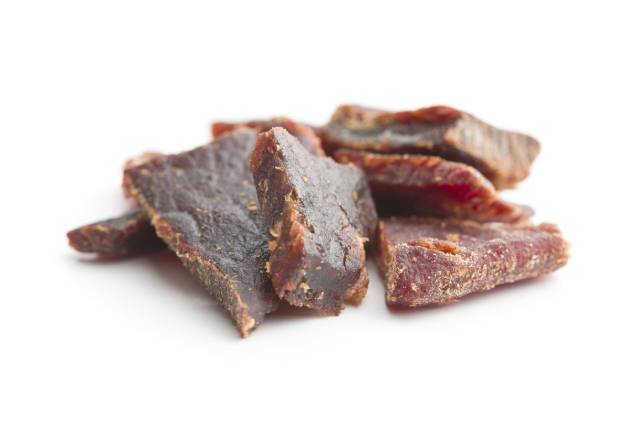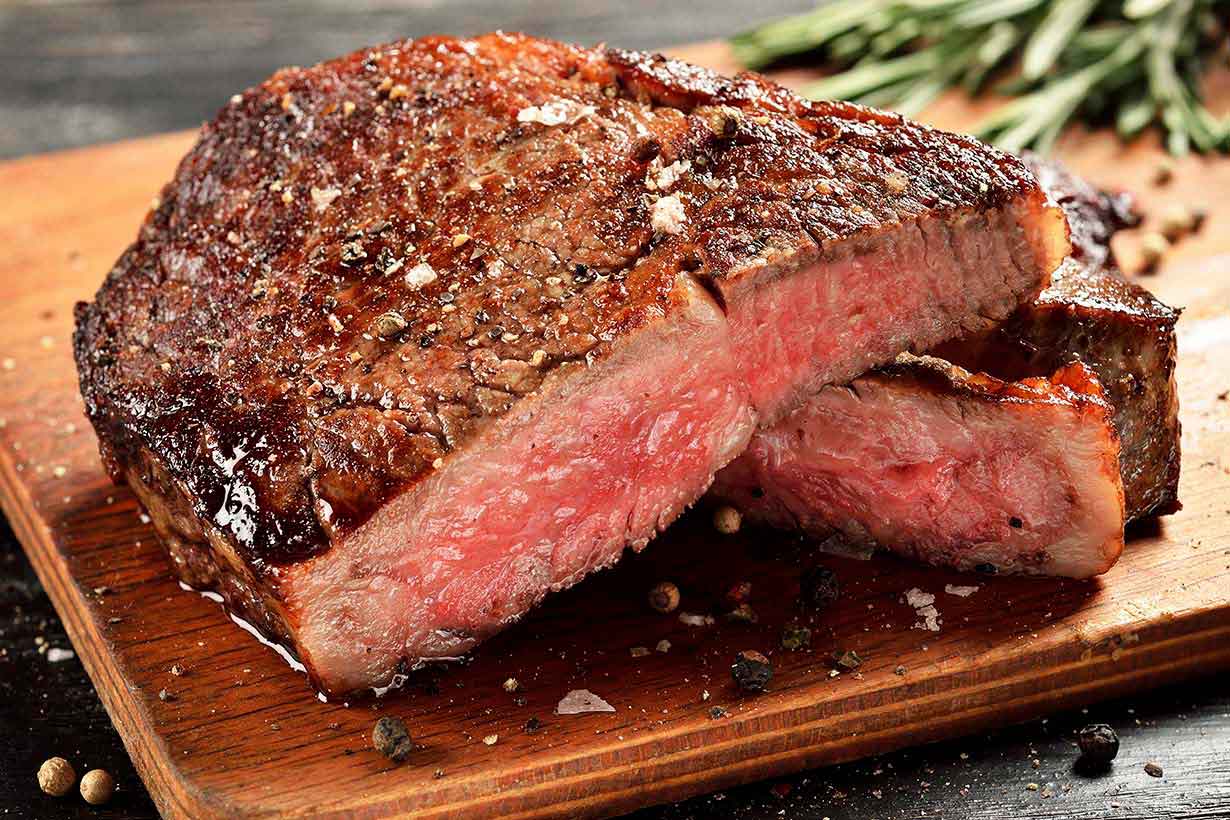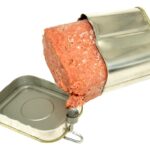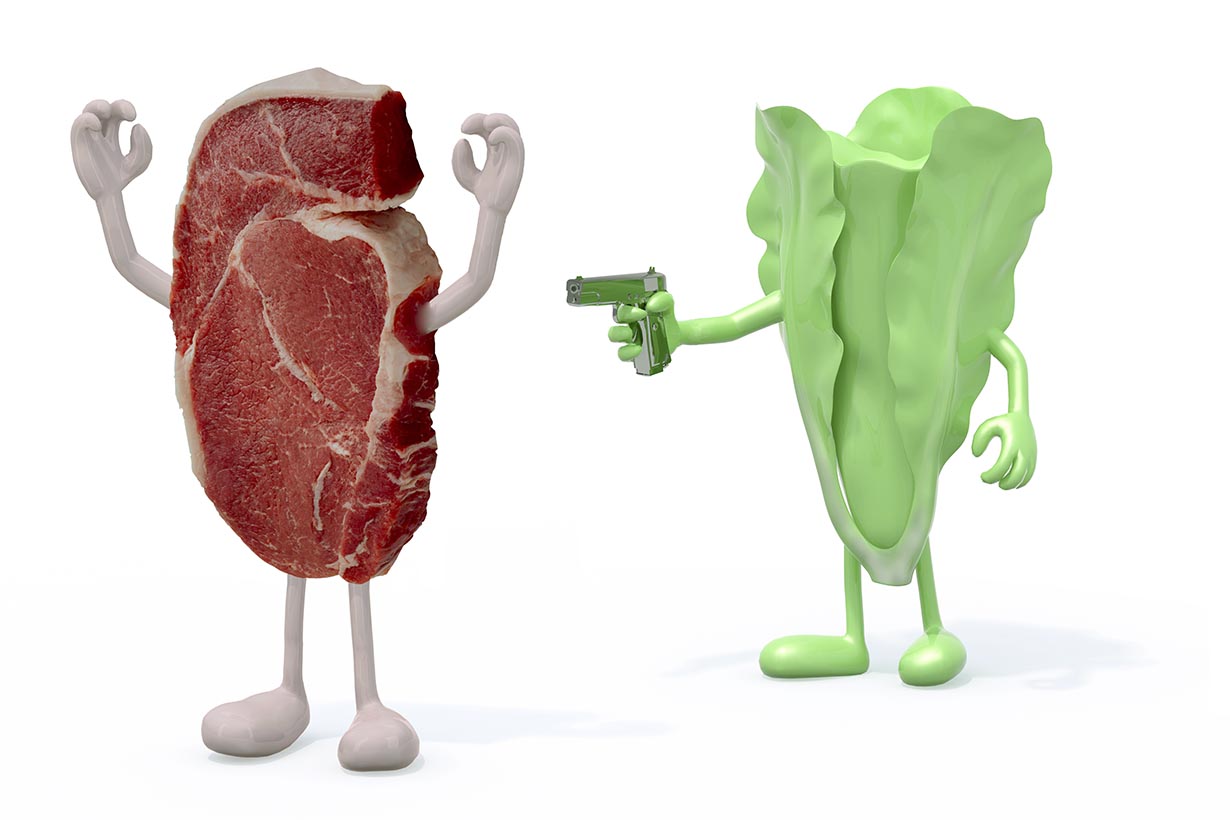Beef jerky is a popular dried meat snack.
However, there are opposing opinions on its nutritional values.
On the one hand, some people assert that beef jerky is a relatively nutritious snack that provides a good range of nutrients.
In contrast, others view it as an unhealthy snack that is high in salt and various additives.
Is either of these viewpoints well-supported? Or does the truth lay somewhere in the middle?
This article examines the nutritional values and potential benefits and drawbacks of beef jerky.

Beef jerky is an excellent source of nutrients
First of all, there is no doubt that jerky offers an impressive nutrient profile.
Based on the USDA’s FoodData Central database, here are the nutritional values per 3.5 oz (100 grams) of beef jerky (1).
| Calories/Nutrient | Amount |
|---|---|
| Calories | 410 kcal |
| Carbohydrate | 11 g |
| Fiber | 1.8 g |
| Sugars | 9 g |
| Fat | 25.6 g |
| Saturated | 10.8 g |
| Monounsaturated | 11.3 g |
| Polyunsaturated | 1.01 g |
| Protein | 33.2 g |
Note: These nutritional values represent the beef jerky product listed in the USDA’s nutritional database. However, these values may slightly differ depending on the specific product.
For example, some jerky contains only beef and salt. Such products will not contain sugars/carbohydrates.
It is also possible to buy jerky made with leaner meat, which will have lower fat content.
Vitamins
- Vitamin B12: 41% DV
- Folate: 33% DV
- Choline: 20% DV
- Thiamin (B1): 12% DV
- Vitamin B6: 11% DV
- Niacin (B3): 11% DV
- Riboflavin (B2): 11% DV
- Vitamin E: 3% DV
- Pantothenic Acid (B5): 3% DV
- Vitamin K: 2% DV
- Vitamin D: 1% DV
Beef jerky is a good source of B vitamins and choline. It is particularly high in vitamin B12.
Minerals
- Sodium: 78% DV
- Zinc: 74 % DV
- Phosphorus: 33 % DV
- Iron: 30% DV
- Copper: 26% DV
- Selenium: 19% DV
- Potassium: 13% DV
- Magnesium: 12% DV
- Manganese: 5% DV
- Calcium: 2% DV
Beef jerky is a significant source of zinc, phosphorus, iron, and copper.
Additionally, jerky often contains added salt, so it is usually high in sodium.
Beef jerky is among the best dietary sources of protein
Jerky contains even more protein than cooked fresh meat.
The main reason for this is because jerky is dried meat, so it has a lower moisture (water) content. As a result, it has a higher protein density.
On this note, just one ounce (28g) of beef jerky provides 9.4 grams of protein (1).
Dietary protein is important for a wide range of reasons, and it can help to (2, 3, 4):
- Build/retain lean muscle mass
- Regulate appetite and help to reduce cravings
- Repair tissues and cells
- Strengthen bone
Beef jerky can be high in sodium
Although we have only examined positive points about jerky so far, there are also some drawbacks to consider.
One of these potential concerns is the high sodium content.
Per 100 grams, typical beef jerky may contain 1785 mg of sodium, which is approximately 78% of the daily value. Per ounce serving, this works out at 506 mg or 22% of the daily value (1).
Excessive sodium intake can lead to increased blood pressure, which can lead to a higher risk of cardiovascular disease and kidney disease over the long term (5, 6).
It is worth noting that sodium is an essential nutrient, and there is nothing wrong with consuming moderate amounts of salt.
However, individuals with salt-sensitivity or hypertension may have to be more careful with their dietary choices (7, 8).
Jerky is a convenient and portable snack
A positive point is that beef jerky does not have the same spoilage concerns that fresh meat or dairy has.
In other words, dried meat does not have to be refrigerated, which makes it a convenient snack.
Firstly, jerky is available to buy in most grocery stores, convenience stores, and supermarkets.
Secondly, we can quickly put some jerky in a lunchbox or a bag and take it to school, the gym, or the office.
Similar to foods like whey protein and canned fish, this also makes jerky an excellent portable source of protein.
Some jerky is full of additives, preservatives, and other ingredients
The specific ingredient profile of beef jerky is another topic worthy of consideration since it can wildly vary.
While some brands of jerky contain little more than beef and salt, others feature a long list of ingredients.
As an example, one popular brand of beef jerky contains:
- Beef
- Water
- Sugar
- Salt
- Brown sugar
- Smoke flavor
- Flavors
- Monosodium glutamate
- Maltodextrin
- Pineapple powder
- Sodium erythorbate
- Citric acid
- Sodium nitrite
The ingredients do not mean this particular product is “bad,” but it does contain numerous ingredients that some people may wish to avoid.
For instance, some people wish to limit their intake of ingredients like added sugar and sodium nitrite, a preservative found in foods like bacon, sausages, and spam.
For this reason, it’s always a good idea to check the packaging of jerky products to ensure they’re the right fit.
Or make beef jerky at home
Homemade jerky is another possibility for those that enjoy making their own food.
It is possible to make jerky using a conventional oven, but using an electric dehydrator can make things much easier.
For more help in this area, the University of Idaho has published a useful guide on making jerky at home safely.
Beef Jerky Is Red Meat
Lastly, beef jerky is a red meat product in the same way that regular beef is.
This means that jerky offers all the same benefits, such as being a significant source of vitamin B12, iron, and zinc.
In contrast, it also shares the same concerns.
For example, studies that observe what populations eat over long periods suggest that red meat may slightly increase the risk of cancer, particularly for colorectal cancer. Several systematic reviews of cohort studies have demonstrated these same associations (9, 10, 11).
However, the strength of evidence (and the absolute risk) for these associations is low.
Additionally, these studies generally don’t take the type of red meat into account. For instance, a meal containing roast beef and vegetables is categorized as ‘red meat’ in the same way that a hamburger and fries meal is.
There Are Several Different Types of Jerky

Not a big fan of beef?
That’s okay.
In addition to beef jerky, there is a broad range of different jerky products available.
Similar to beef jerky, each of these products is nutrient-dense, and they’re all a convenient source of protein for people on the run.
Some of the most popular forms of jerky include:
- Chicken
- Fish
- Pork
- Squid
- Turkey
Final Thoughts
Overall, beef jerky offers a lot of nutritional value, and its convenience is one of its strong points.
It is true that jerky is often high in sodium and added sugars, but there are many different recipe formulations, and it is easy to find a brand with simple ingredients.
With moderate intake levels, there is no reason why jerky can’t play a role in a healthy diet.
For more on different types of meat, see this guide here.








